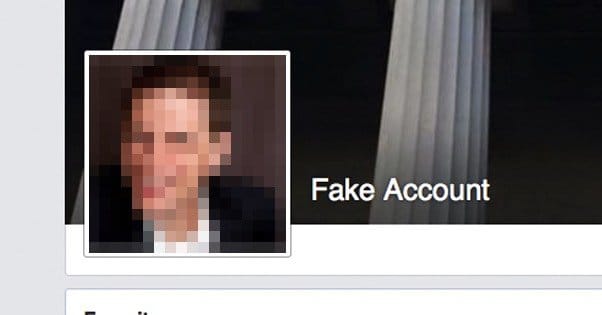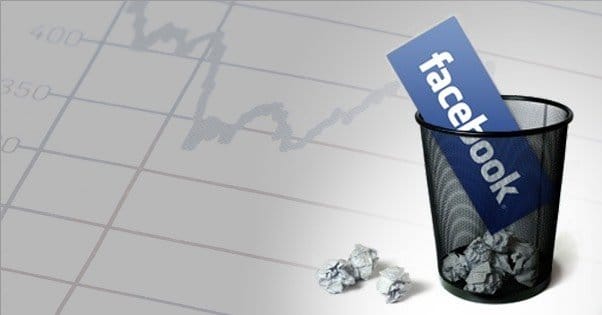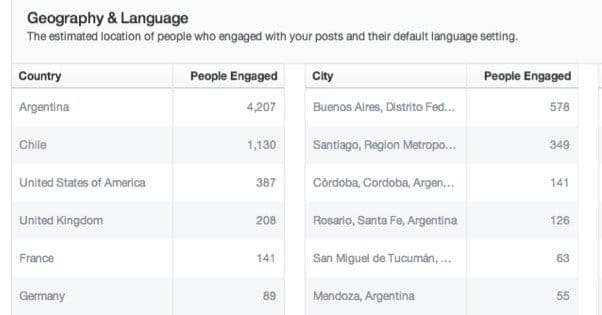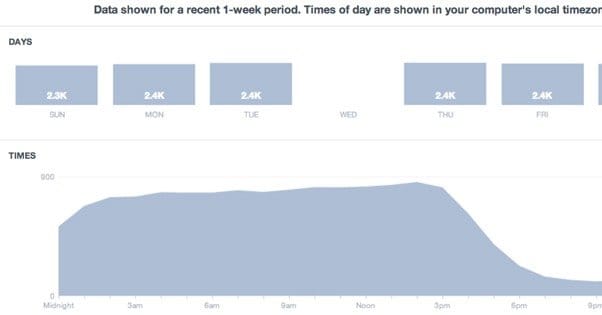 Written by ContentPowered.com
Written by ContentPowered.com
If you pay close attention to the title of this post, you might notice something. I’m not about to tell you not to buy Facebook likes. What I’m telling you to do is not buy fake likes. There’s a big difference.
Buying likes in general is not a bad thing. I mean, what else do you think you’re doing with Facebook ads when you use the page like objective? You’re converting money into text and images, which in turn convert into people liking your page. If you’re buying likes through a third party service, the only difference is you’re running your ads on pages other than Facebook. That’s how most of these services work; they advertise your site with their exclusive networks.
Fake likes, however, are a lot worse. When you’re buying fake likes, they come in one of two flavors; bot and bad.
• Bot likes come from actual robots, software created to run Facebook profiles. These profiles tend to have the minimum amount of information plugged into them, and they don’t do anything other than like pages. Typically a fake like seller has a fleet of bots on standby, managing hundreds or thousands of accounts to mass follow pages they point to.
• Bad likes are powered by real people, but those people tend to not be engaged in any way. Not only do they not actually care about your business; they probably reside in countries that you don’t do business with regardless. Fake likes are most commonly found in countries like Bangladesh, India, Pakistan, and Malaysia.
As for why those likes are bad, here’s a bunch of reasons. This should work to convince you to buy legitimate likes, if you’re buying at all.
1. Fake Likes Don’t See Posts
Fake users don’t do anything on Facebook, at all, other than like accounts. Very, very rarely they will randomly browse and share posts, but they don’t have friends to share them with, or if they do, those friends will be other bots or fake users in a click farm.
This means a few things. It means your organic post reach will be much smaller than it could be. It also means that your potential viral reach is severely limited. Think of your followers as a foundation of a building, and your reach as the potential height you can get by building upwards. Without a strong foundation, you can’t build much more than a lean-to or shed. If you persist and build up, your finished construction will be fragile and prone to collapse.
If people don’t see your posts, they can’t go on to do anything you want them to do afterwards. Worse, fake users being shown your posts takes away from real users who might bur don’t.
2. Fake Likes Don’t Engage
Once again, fake likes are not real. Even if there are real people behind them, in the case of click farms, those people aren’t browsing for interests. They’re browsing because they’re paid a few dollars a day to like a certain number of Facebook pages, including a list handed to them by the owner of the click farm.
The reason these people like random pages in addition to the pages they’re told to like is because it helps obfuscate their behavior from Facebook. If Facebook detects a swarm of users all liking page A, page B, page C, and page D, they can identify that these pages have nothing in common and that the users must have an ulterior motive for liking them. However, if these users like a bunch of different pages, that happen to include ABC and D but also 20 other pages, it’s harder for Facebook to detect the patterns.
Of course, Facebook has other ways to detect fake followers. There are a lot of signs, such as having 10,000 liked pages and next to no posts on their wall, no friends, and a profile picture shared by a bunch of similar users or stolen from Google Image Search.
3. Fake Likes Diffuse Your Message
Imagine a scenario where you have a page that has 200 followers. That’s not many, and it seems even worse when you realize that you have an organic reach of 10%. When you make a post, that post is only shown to 10% of your users, so only 20 of those 200 users see that post. Now, there’s a lot of benefit to be had there; they can share it, they can engage, they can get it shown to other users along the way, etc. They can even click links, visit your site, and convert.
Now imagine that you aren’t satisfied with 200 users and you buy fake Facebook fans. Your follower count goes up to 2,000, meaning you have 200 legitimate users and 1,800 fake users. Now, you still have 10% reach, which means when you post, you reach 200 users. However, it’s likely that at BEST you’ll still only reach 10% of your legitimate followers, which is still 20. You’re not going to somehow magically reach all 200 of your real followers. This is a lot of lost potential; your actual real reach is closer to 1% all told.
4. Fake Likes Waste Money
Imagine you have a budget of $100 a week. You could spend that on Facebook likes through a fake like purchasing service, like some seller on Fiverr. Checking now, you can get 80 likes for $5, which means your $100 can get you 1,600 new followers per week. That’s significant growth, if they were real likes. They aren’t, though, so you’re throwing money away.
Now imagine you spent that budget on Facebook ads instead. Jon Loomer, one of the foremost experts in Facebook advertising and a familiar name to regular readers of this blog, calculates that a Facebook like will typically average around 50 cents, when you’re using Facebook ads properly. That means your $100 will get you around 200 followers. A much smaller number, but they’re real people, so they’re infinitely more valuable.
5. Fake Likes Get Banned
When Facebook catches an account used for a fake like, they ban that account. This will remove the account from Facebook, but it doesn’t necessarily remove the follower from your followed list. This is a fault with the system, which is generally used for people who temporarily delete their accounts, which can be restored later. They don’t want your likes to disappear, that would be a poor user experience. This does, however, lead us to the next fault with fake likes.
6. Fake Likes Are Removed
Periodically, Facebook will go through their logs and remove banned accounts, as well as memorialized accounts and certain other accounts, from the lists of followers for businesses. You usually see big notifications circulating through the blogging world, as well as notifications on Facebook itself. “Likes have recently been removed” is a common message.
When fake likes are removed, it’s generally a good thing. It means your reach will improve, your engagement will rise, and more of your real fans will see your posts. However, it also will show a sharp drop in follower statistics, which is visible for at least a week on your public page. Any user will be able to see it, which might open you up to investigation by particularly keen-eyed fans.
And, of course, any money you spent on gaining those fake followers is lost when they are removed.
7. Fake Likes Are Against the Facebook ToS
Facebook’s terms of service are not to be trifled with. They can levy legal action for some violations, and they are completely free to do whatever they wish to your account for a variety of other reasons. Essentially, by buying fake likes, you’re leaving yourself open to penalties.
The most common penalty you’re likely to face is a simple removal of likes. You are not entitled to any sort of refund or compensation for the lost followers, regardless of why they were lost. They aren’t going to treat removing a bot any differently than removing the account of someone who died.
To a certain extent, marketing is always a bit of a sunk cost. It’s always spending for the potential to get people to help grow your brand and your profits, through a variety of different means. If those means don’t pan out, you’re not getting a refund, so why would Facebook be any different?
8. Fake Likes Discourage Real Users
A lot of times, when I see a new brand I might be interested in following on Facebook, I’ll check to see what kind of audience they have. This is more idle curiosity than any actual requirement in my mind, but it’s always interesting to see what proportion of visible Facebook followers come from clickfarm countries or are obvious bot accounts.
For the normal non-marketer user, it’s a little more of a subtle influence. The normal user might not piece together the problem with having 100,000 followers but only 1-2 comments on organic posts. They might not draw those conclusions, but they feel put off or uncomfortable at the relative disconnect between the presumed activity levels and the actual levels. They’ll be a little more hesitant to follow.
You also occasionally run into an issue with racism, though no one will actually call it out. If you bought a bunch of likes from a clickfarm, chances are you’ll have a lot of followers with middle eastern pictures and names. How many vaguely racist users have turned away because of it? It’s hard to say.
9. Fake Likes Skew Your Demographics
Another issue with fake likes is the demographic problem. Demographics are extremely important for ad targeting and, to a lesser extent, the development of your marketing in general. You want to know about your users. Where do they come from? Are they male or female? Do they make a lot of money or a little? How educated are they? What is their age distribution?
Clickfarms will skew your demographics away from the locations you want to target, and to a lesser extent, they will skew your information away from other valid observations. Bot traffic will also make your audience look generally more female and younger than it is. This is because the most successful bots tend to be young females, because they are used for other purposes beyond liking pages.
In both cases, it means that when you go to use your demographics for future targeting, you’re using incorrect data. This means you waste time and money on clicks that don’t do anything at best, and at worst lead to more clickfarms.
10. Fake Likes Make Ad Costs Skyrocket
This is an extension of incorrect demographics, but it goes in two ways, depending on how you set up your targeting.
On one hand, your costs can go up, because you’ve made it harder to reach the people who actually matter to you. You’ll have a worse reputation and you’ll be harder to like and follow.
On the other hand, you can target your actual demographics, and watch as your ad costs go down. However, it will take much more in terms of views to get a conversion, so while you’re paying less per person, you need to gather more people to find anyone who will follow you.
Worse, if you’re trying to run ads that reach your audience and that work on a different objective, like website conversions, you’re going to have a much harder time. The people who make up your actual demographics aren’t in locations or positions where they can buy.
11. Fake Likes Are Easy to Spot and Hurt Your Reputation
Hillary Clinton was recently criticized for a huge number of her recent gains in social media coming from clickfarm countries. You can see the graphs here. You can also just go to her page. She’s far from the only one, too; last election, Mitt Romney had the same thing happen to him, and before that Newt Gingrich was criticized for the same thing. It’s easy to spot once you know what to look for, and trust me; people will be looking.
12. Fake Like Click Farms Are Hard To Escape
One common complaint with Facebook ads these days is that, poorly targeted, they often attract the attention of a clickfarm. This leads to your ad budget dissolving as they swarm you, giving you fake likes and sapping your money. Here’s the thing; even if you stop the ads, nothing stops the clickfarms from circulating your page as one of the pages to like to hide their activity. It’s very hard to escape their notice.
13. Fake Likes Make Legitimate Marketing Harder
I’ve already mentioned that demographics are skewed when you buy fake likes, and that costs drain your budget when you’re running poorly targeted ads. It’s also difficult to run ads that target your own audience and convert, and it’s difficult to successfully boost a post. It just limits your ability to advertise, period.
14. They’re Impossible to Remove
The worst part about fake likes is that they’re damn near impossible to remove. Facebook doesn’t allow you to get a readout of your entire follower list. The best you can do is go back through it manually, checking each person who comes up, to see if their profile looks fake.
Ideally, Facebook would develop and release a tool that allows you to scan your followers, flag the most likely troublemakers, and remove them from your page without issue. This isn’t the case, though. Instead, we just have to deal with fake likes.
15. Fake Likes Don’t Follow Links
Very, very rarely will a fake follower click a link, and when they do, it’s never going to lead to anything. The fake followers made of software don’t care one whit about what’s on your site. The ones that are monitored by real people might be interested, but unless you can accept a 99% price cut and ship to the Philippines, you’re not going to make any use of that interest.
16. Fake Likes Don’t Buy Products
As an extension of the previous concept, you’re not converting fake likes. I don’t care if you have a digital product for a low price that can work in Bangladesh; it’s not going to work with a click farm. There’s no way to turn fake likes into real profits. Believe me, if there was, a million people would be doing it.
17. You’ll Never See Your Money Back
So you’ve bought fake likes and decided they didn’t work for you, or you got penalized for buying them, or you had them removed. Now what? You could try going back to the person who sold them to you and asking for a refund. They’ll laugh in your face, and it will be refreshing, as honesty so often is. That is, if they respond at all. All the money you spent is gone forever.
18. You Might Become a Target For Hacking
This is extremely rare, but occasionally fake fans will turn into gateways through which you can be targeted for an attack of opportunity. It’s not necessarily something to worry about, but who knows; it could be possible. Just another reason to avoid fake likes.
19. Fake Accounts Can Turn Into Spambots
This is a lot more common. What happens to a fake profile when its usefulness for liking pages has stopped? A lot of times, what that account does is looks at the user databases of the businesses it follows and tries to friend those people. Once friended, it’s able to spam its own message out to them. You don’t want to be a vector for spam.
20. They Can Piss Off Real Users
This one happened with the above-mentioned Mitt Romney follower scandal. One man found that his picture was had been stolen for use as a fake follower profile picture… five times. None of them removed the picture when he requested it. This angers even legitimate followers, who might unfollow you in the backlash.



